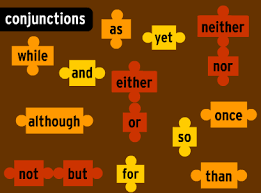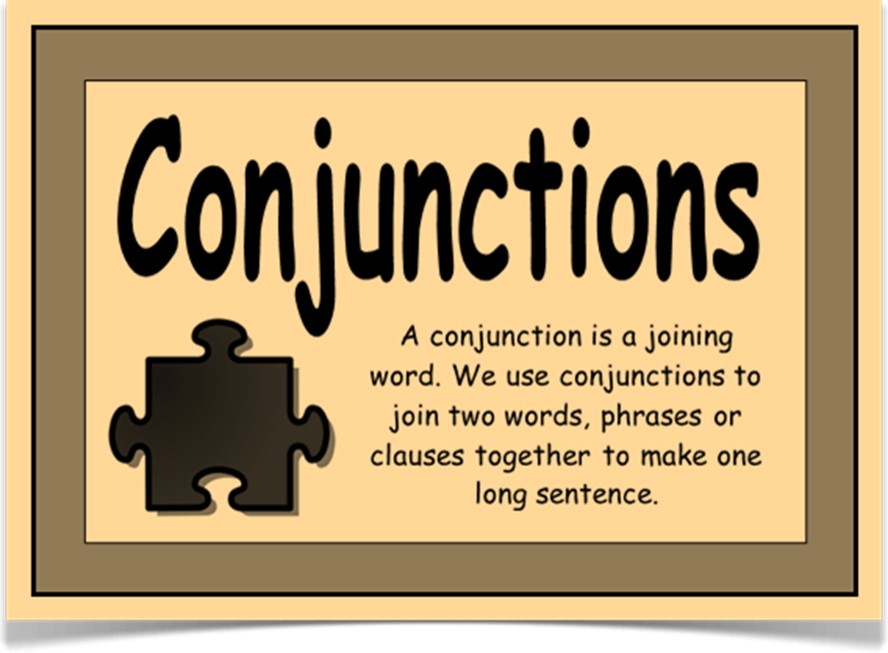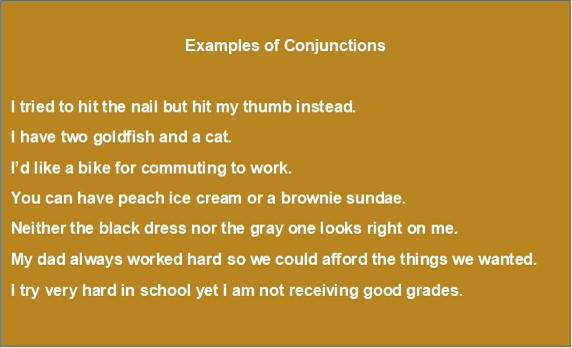
Conjunctions
Conjunctions are words that link other words, phrases, or clauses together. Conjunctions allow you to form complex, elegant sentences and avoid the choppiness of multiple short sentences. Make sure that the phrases joined by conjunctions are parallel words which connect words, phrases, clauses or sentences are called conjunctions. The most common ones are 'and', 'or' and 'but'. These words all have different nuances and connotations but they all help to build up meaningful relationships within a sentence.

Correlative Conjunctions
Correlative conjunctions are pairs of conjunctions that work together. Some examples are either/or, neither/nor, and, not only/but also, both/and, whether/or. These conjunctions correlate, working in pairs to join phrases or words that carry equal importance within a sentence.
Subordinating conjunctions join independent and dependent clauses. A subordinating conjunction can signal a cause-and-effect relationship, a contrast, or some other kind of relationship between the clauses. Common subordinating conjunctions are because, since, as, although, though, while, and whereas. Sometimes an adverb, such as until, after, or before can function as a conjunction.
Coordinating conjunctions coordinate or join two or more sentences, main clauses, words, or other parts of speech which are of the same syntactic importance. Coordinating conjunctions are used to give equal emphasis to a pair of main clauses. Coordinating conjunctions always connect phrases, words, and clauses. For example, This batch of mushroom stew is savory and delicious. Some of the coordinating conjunctions are for, and, nor, but, or, yet, so etc.

Punctuations
Punctuation is the use of spacing, conventional signs, and certain typographical devices as aids to the understanding and the correct reading, both silently and aloud, of handwritten and printed texts. In other words, it is the practice, action, or system of inserting points or other small marks into texts, in order to aid interpretation; division of the text into sentences, clauses, etc., by means of such marks


Punctuation consists of both rules and conventions. There are rules of punctuation that have to be followed, but there are also punctuation conventions that give writers greater choice. Punctuation is used to create sense, clarity and stress in sentences. You use punctuation marks to structure and organize your writing.
Types of Punctuation
Punctuation marks are essential when you are writing. They show the reader where sentences start and finish and if they are used properly they make your writing easy to understand. They give a practical guidance on how to use commas, semicolons, and other types of punctuation correctly so that your writing will always be clear and effective. There are also sections which offer advice on using punctuation when writing direct speech, lists, or abbreviations.

Recap
Q.1 |
It was raining today __ there are no cabs and autos. |
| a) | because |
| b) | but |
| c) | so |
| d) | whereas |
Q.2 |
I watched the movie______ my favorite actor was acting in it. |
| a) | so |
| b) | because |
| c) | but |
| d) | whereas |
Q.3 |
India won the match ________ South Africa played very well. |
| a) | so |
| b) | but |
| c) | although |
| d) | because |
Q.4 |
In room number 213 of the hotel we have a view of the pool_______ in room 401 we have a view of the garden. |
| a) | so |
| b) | because |
| c) | yet |
| d) | whereas |
Q.5 |
I completed my work very quickly ___ didn't make any mistakes. |
| a) | but |
| b) | that's why |
| c) | because |
| d) | so |
Q.6 |
It is a National Holiday today. __________ The schools and offices are closed. |
| a) | that's why |
| b) | as |
| c) | but |
| d) | and |
Q.7 |
I am not allowed to drink ______ I am still 14. |
| a) | although |
| b) | because |
| c) | so |
| d) | yet |
Q.8 |
She didn't eat anything tonight ________ she was very hungry. |
| a) | therefore |
| b) | whereas |
| c) | and |
| d) | although |
Q.9 |
_______ India won the match, everyone was bursting crackers. |
| a) | if |
| b) | because |
| c) | while |
| d) | so |
Q.10 |
It's very sunny outside. __________ We all should wear our sunglasses. |
| a) | but |
| b) | unless |
| c) | because |
| d) | that's why |
Your Score: 0/10
Yearlong program for Olympiads preparation & to build necessary skills for future.
Explore More
Time to mark your calendar with the upcoming Olympiads exam schedule.
Explore More
Take your Olympiad preparation to next-level by taking LIVE Classes.
Explore More
Assess your performance by taking topic-wise and full length mock tests.
Explore More
Online tuitions for international compeitions like SASMO, SEAMO, etc for Grades 1-11.
Explore More